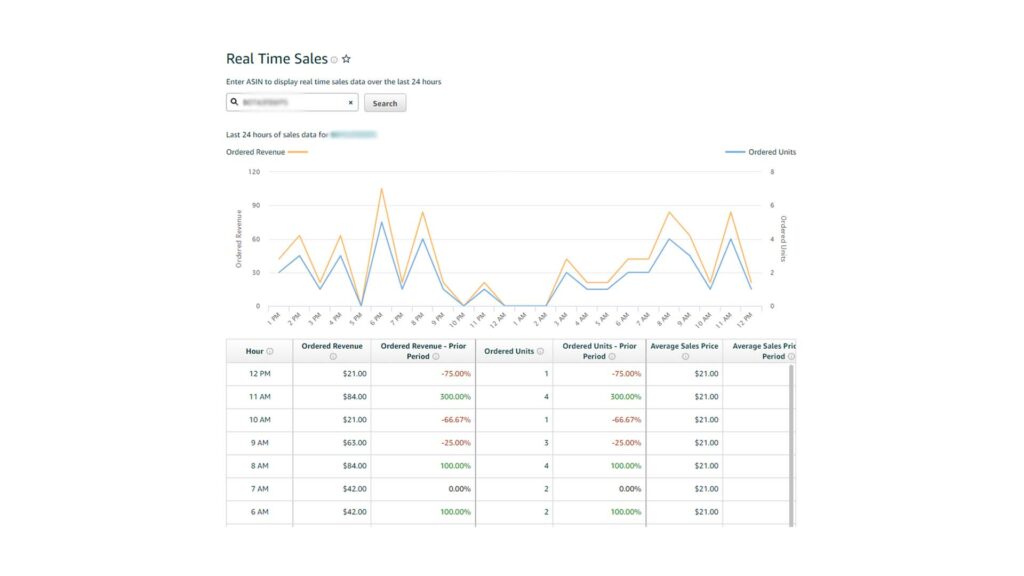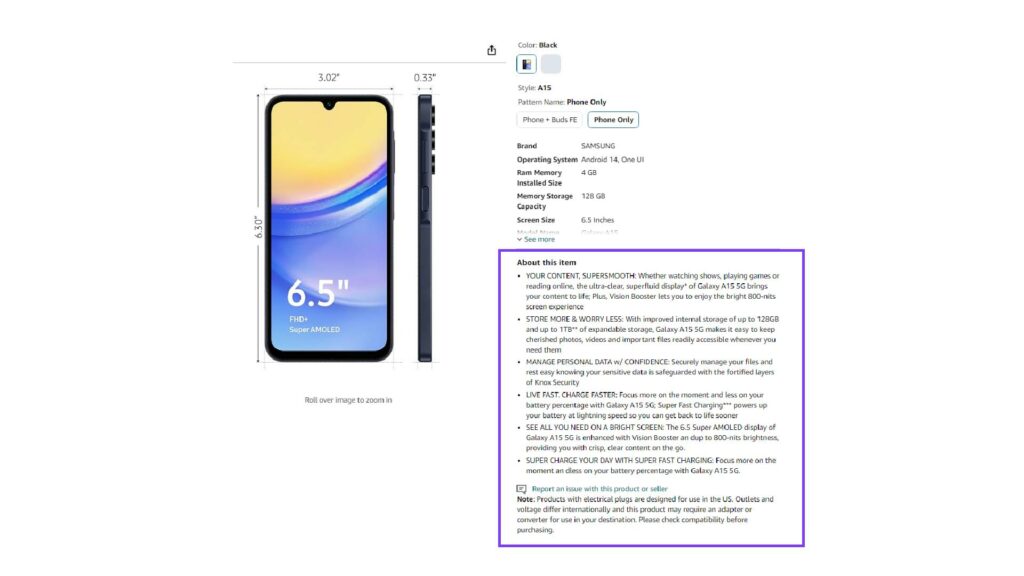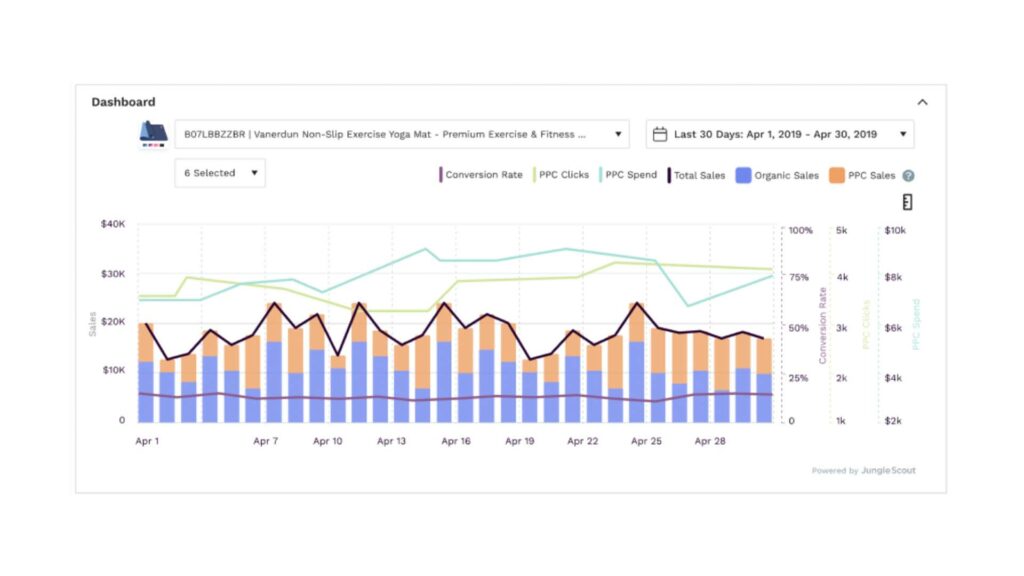Have you ever wondered how the Amazon search algorithm works? Recent updates have revolutionized the landscape, impacting key factors such as sales velocity, product price, stock levels, and more. Amazon SEO has never been this competitive, or confusing.
Worry not!
In this post, we’ll explore the essential elements of Amazon’s algorithm and reveal why contextual SEO is a game-changer for optimizing your product listings. Discover how to enhance your visibility and sales with effective Amazon SEO strategies.
Table of Contents
Understanding Amazon’s Algorithm: The Basics
Amazon’s algorithm, often referred to as A9 (or the elusive A10), is the backbone of how products are ranked and displayed in search results.
While there’s no official “A10,” continuous updates are always in play. Let’s break down the key factors influencing your product’s visibility on Amazon.
Sales Velocity
Sales velocity is a major component. Amazon wants to show products that are proven sellers. The more units you sell quickly, the higher your rank.

To boost sales velocity:
- Offer promotions and discounts: Temporarily lower prices to attract more buyers.
- Leverage Amazon PPC: Run targeted ads to drive more traffic to your listings.
- Optimize for conversions: Ensure your product page is compelling and persuasive.
Stock Levels
Maintaining healthy stock levels is crucial. Amazon penalizes listings that frequently run out of stock, as this disrupts the customer experience. Here’s how to manage stock effectively:
- Use inventory management software: Tools like Eva’s AI platform can predict demand and help you avoid stockouts.
- Monitor sales trends: Keep an eye on your sales data to anticipate when you’ll need to reorder stock.
- Set up alerts: Receive notifications when stock levels are low.
Product Pricing
Competitive pricing can improve your rank. Amazon favors products that offer good value and competitive prices within their category. To keep your prices competitive:
- Conduct market research: Regularly check competitor prices.
- Utilize repricing tools: Automatically adjust your prices based on competitor activity.
- Consider your margins: Ensure that your pricing strategy is sustainable.
Conversion Rates
High conversion rates indicate that customers are finding what they need and making purchases. Optimizing your listing to boost conversions is essential. Focus on:
- High-quality images: Use professional photos that showcase your product from multiple angles.
- Clear, compelling copy: Write descriptions that highlight key features and benefits.
- Customer reviews: Encourage satisfied customers to leave positive reviews.
Factors Influencing Amazon’s Algorithm
Keyword Relevance
Using the right keywords is foundational. Not just any keywords, but those highly relevant to your product and audience. To find the best Amazon keywords:
- Keyword research tools: Use tools like Eva’s AI platform to discover high-relevance keywords.
- Competitor analysis: Look at the keywords your competitors are using.
- Customer insights: Understand what terms your target audience uses to search for products.
Click-Through Rate (CTR)
A compelling main image and title can significantly improve your CTR. The more people click on your listing from the search results, the better your rank. Improve your CTR by:
- Optimizing your main image: Use a clear, high-quality image that stands out.
- Crafting an engaging title: Include primary keywords and highlight key benefits.
- Testing variations: Experiment with different images and titles to see what works best.
Customer Reviews
While still important, reviews are now just one piece of the puzzle. Ensuring a high quantity of positive reviews will still benefit your ranking. Enhance your reviews by:
- Requesting d: Send follow-up emails asking customers to leave reviews.
- Providing excellent service: Ensure a great customer experience to garner positive feedback.
- Addressing negative reviews: Respond professionally to negative reviews and address issues promptly.
External Traffic
Amazon rewards listings that drive external traffic to the platform. Leveraging social media and other marketing channels can boost your Amazon ranking. Drive external traffic by:
- Social media marketing: Promote your products on platforms like Facebook, Instagram, and TikTok.
- Influencer collaborations: Partner with influencers to reach a broader audience.
- Content marketing: Write blog posts or create videos that link back to your Amazon listings.
Consistent Sales
Consistent sales figures help Amazon predict and manage its inventory more efficiently, favoring products that move steadily. Maintain consistent sales by:
- Building customer loyalty: Encourage repeat purchases through excellent service and loyalty programs.
- Running promotions: Keep sales steady with regular promotions and discounts.
- Optimizing ad campaigns: Continuously refine your Amazon PPC campaigns to maintain traffic flow.
How to Optimize Listings with Contextual SEO
Contextual SEO involves optimizing your listings based on current search trends, customer behavior, and competitor analysis. Here’s how you can implement this strategy effectively.
Find Relevant Keywords
Identify keywords that are not only high in search volume but also highly relevant to your product. Tools like Eva Commerce’s AI platform can help you uncover these valuable keywords.
Steps to find relevant keywords:
- Brainstorm seed keywords: Start with basic terms related to your product.
- Expand your list: Use keyword research tools to find related terms and phrases.
- Analyze search intent: Ensure the keywords match the intent of your target audience.
Optimize Your Main Image
Your main image should be clear, professional, and representative of your product. Consider using AI tools to brainstorm creative image ideas.

Tips for optimizing your main image:
- Use a clean background: A white background is often preferred.
- Highlight key features: Show important details of your product.
- Maintain high resolution: Ensure the image is sharp and clear.
Improve Your Title and Bullet Points
Ensure your title includes the main keywords and clearly describes your product. Bullet points should highlight key features and benefits, incorporating secondary keywords. Crafting effective titles and bullet points:
- Be descriptive: Clearly convey what the product is.
- Include benefits: Highlight how the product can help the customer.
- Use keywords naturally: Integrate keywords without sounding forced.
Better Product Description with Amazon SEO
Your product description should be detailed, engaging, and SEO-friendly. Use it to tell your product’s story and answer potential customer questions.

Writing compelling descriptions:
- Tell a story: Engage the reader with a narrative about the product.
- Use bullet points: Break down information into easily digestible chunks.
- Include a call to action: Encourage the customer to make a purchase.
Use Backend Keywords
Amazon allows you to include additional keywords in the backend search terms. Make the most of this space by including relevant keywords you couldn’t fit in the front-end content. Effective use of backend keywords:
- Avoid repetition: Use different keywords from those in your title and bullets.
- Include variations: Add synonyms and related terms.
- Maximize space: Use all available character space efficiently.
Monitoring and Adjusting Your Strategy
Once you’ve optimized your listings, it’s essential to monitor their performance. Here are some metrics to keep an eye on:
Session Percentage
Track the number of sessions or visits to your product page. An increase in sessions indicates that your listing optimization efforts are paying off.

How to track and improve sessions:
- Analyze traffic sources: Understand where your traffic is coming from.
- Enhance discoverability: Improve keyword rankings to increase organic traffic.
- Promote externally: Use social media and other channels to drive more traffic.
Conversion Rate
Monitor your conversion rate to see how many visitors are turning into buyers. Aim to continuously improve this rate. Tips to boost conversion rates:
- Optimize listings: Ensure your product page is fully optimized for SEO and user experience.
- Enhance images and videos: Provide high-quality visuals to help customers make informed decisions.
- Offer incentives: Use promotions and discounts to encourage purchases.
Sales Rank
Keep an eye on your sales rank within your category. A rising rank means your product is gaining traction. Strategies to improve sales rank:
- Drive consistent sales: Use promotions and advertising to maintain steady sales.
- Encourage reviews: Positive reviews can boost sales and improve rank.
- Monitor competitors: Stay ahead of competitors by regularly updating and optimizing your listings.
Customer Feedback
Regularly review customer feedback and adjust your listings based on their suggestions and complaints. How to utilize customer feedback:
- Identify common issues: Address recurring problems highlighted in reviews.
- Improve product quality: Make changes to your product based on feedback.
- Enhance customer service: Provide excellent support to resolve issues promptly.
How Eva Can Help
Eva Commerce is a leading eCommerce technology company dedicated to helping brands achieve profitable growth on Amazon, Walmart, and other marketplaces.
Our unique AI platform, combined with expert support, enables brands to optimize their advertising strategies and make data-driven decisions.
Eva’s AI platform is the only context-aware advertising solution that integrates inventory levels, conversion rates, and profitability metrics across all marketplaces, not just Amazon.
Our experts analyze this data to determine the best actions for your advertising campaigns, ensuring maximum efficiency and ROI.
As an Amazon Advanced Partner and Walmart Strategic Solution Partner, Eva also collaborates with industry giants like TikTok, eBay, Shopify, Google, Meta, Wayfair, Faire, and more.
By focusing on profitability, Eva ensures sustainable growth and helps brands invest in the most effective multimedia mix for their marketing efforts.
Ready to take your Amazon business to the next level? Book a free consultation with Eva Commerce.
FAQs
Amazon’s A9 algorithm is the system that determines the ranking of products in Amazon’s search results. It considers factors like sales velocity, stock levels, pricing, and more.
Sales velocity indicates how quickly your products are selling. High sales velocity can improve your product ranking as it shows Amazon that your product is popular.
Use relevant keywords, high-quality images, detailed product descriptions, and leverage backend keywords. Regularly update your listing based on performance metrics.
Backend keywords are hidden keywords in your Amazon listing that help improve its search visibility without cluttering the visible content.
Monitoring your conversion rate helps you understand how well your listing converts visitors into buyers, allowing you to make necessary adjustments.
Eva’s AI platform integrates inventory levels, conversion rates, and profitability metrics to provide actionable insights for optimizing your advertising and listing strategies.
Contextual SEO involves optimizing your listings based on current search trends, customer behavior, and competitor analysis to improve visibility and conversions.
Driving external traffic to your Amazon listing can improve your ranking as Amazon rewards listings that attract new visitors to the platform.
Eva Commerce provides data-driven insights, context-aware advertising solutions, and expert support to help you achieve profitable growth on Amazon.
Customer reviews provide social proof and can influence other customers’ purchasing decisions, indirectly affecting your listing’s conversion rate and ranking.
Wrapping Up
Understanding and leveraging Amazon’s algorithm is crucial for optimizing your product listings and achieving better visibility and sales.
By focusing on contextual SEO, you can ensure your listings are relevant, engaging, and effective in converting visitors into buyers.
Don’t forget to utilize the powerful tools and expert support provided by Eva Commerce to maximize your Amazon business potential.
Ready to elevate your Amazon game? Book a free consultation with Eva Commerce today!








